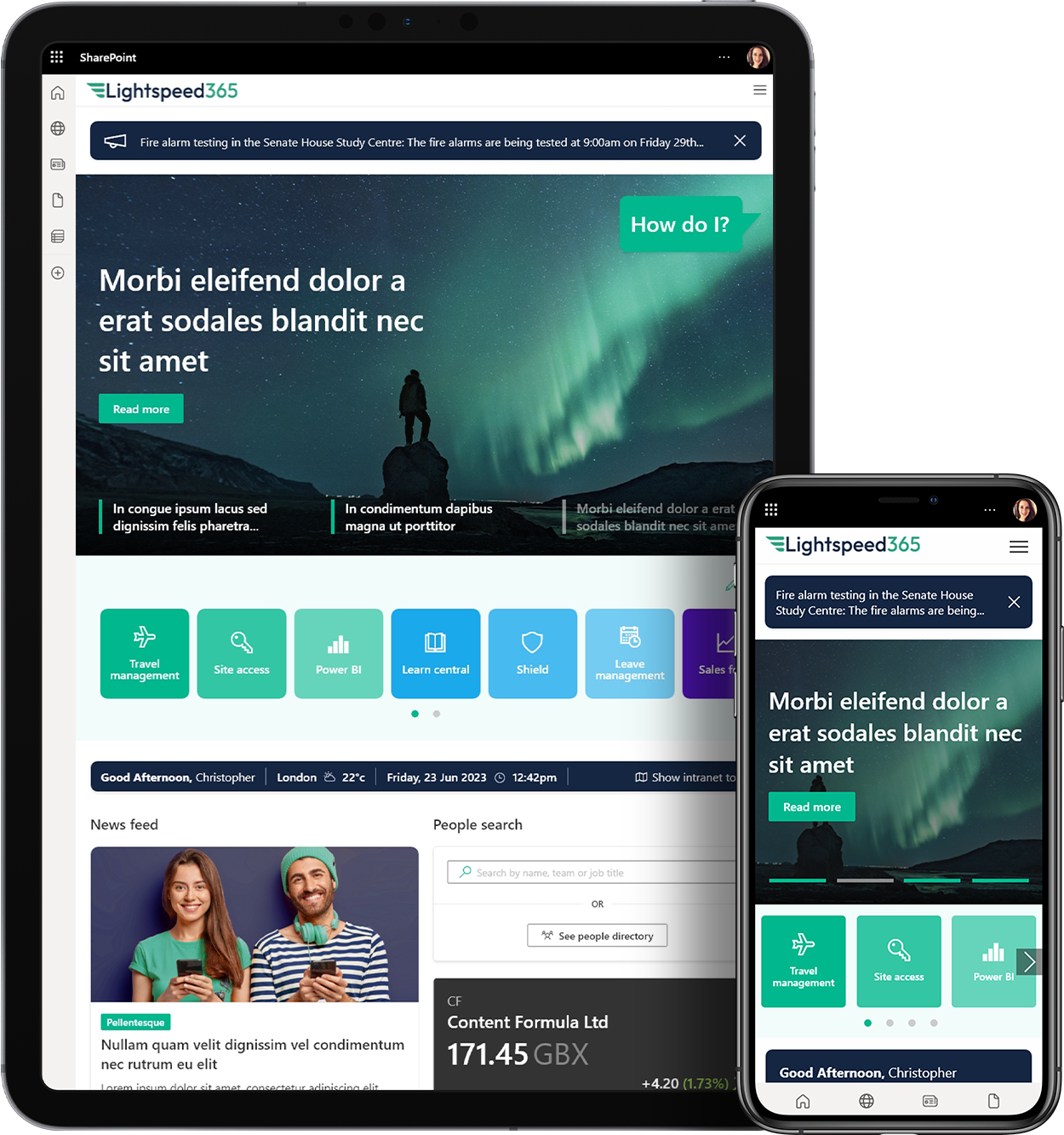Building a true digital workplace is a path which many of our clients are now following. With the help of Wizdom and Office 365, they are going beyond the confines of the traditional intranet and implementing an experience where employees can carry out more and more of their everyday work efficiently and effectively, all wrapped up in an attractive user interface.
Earlier in the year, at our Digital Workplace conference in Copenhagen, we heard from a number of organizations who are on their digital workplace journey, as well as from members of the Wizdom team or trusted partners, about what needs to be done to build a successful digital workplace. Clause Ole Hasle, Wizdoms COO and Christian Larsen, Director of Internal Communication and Corporate Events, and Events, GEA Group presented together about some of the best practices to follow.
Here are some of some observations from that session, which were also reflected in some of the other presentations. Here are six best practices to follow in building a digital workplace.
1. Consider a wide scope which focuses on the full potential of the digital workplace
The digital workplace can have a very wide scope with a broad range of functionality, capabilities and content. Often the wider the scope, the more potential value your digital workplace will deliver to employees.
In working out what you want your digital workplace to be, its critical to not to have a traditional intranet mindset and focus just on news publishing and static content. Consider how employees do their work, what will deliver business value, the key processes in your organization and outcomes such as increased productivity and even digital transformation.
In considering a wide scope of the digital workplace, several elements were outlined including:
- Communication
- Collaboration
- People and communication
- Projects
- Tools
- Standards and procedures
- Employee self-service
- Processes
If that scope sounds ambitious, thats because it is! But its worth remembering that the digital workplace is a platform which evolves. Having a wide scope from the start means that you can build your platform in a way so that it can keep on expanding and delivering value.
2. Use standard products and limit customization
Office 365 and products like Wizdom keep on adding more and more tools and capabilities. Microsofts investment in the Office 365 toolset is impressive. We also focus much of our effort on making Wizdom better and better.
The sheer scale of the tools available as well as their configurability, means that organizations can usually meet the vast majority of their digital workplace needs out of the box. Theres also a much better user experience compared to a few years back, so organisations dont need to change interfaces.
Using the standard product functionality for your digital workplace has many advantages. Its far easier to maintain and cheaper to run, quicker to introduce changes and your digital workplace keeps on expanding. Youre taking advantage of a platform which keeps on improving, particularly if you are in the cloud rather than on-premises.
Customizing your entire digital workplace comes with risks its expensive, time-consuming and may not be compatible with the latest updates. It will mean there will be more work involved with any upgrade to your platform and a higher risk of issues. We know that in complex organizations or for particular processes sometimes customization is needed. However, we strongly recommend limiting the level of customization to only where your business has particular complex needs and will truly deliver value.
3. Invest in search
Search is an essential part of the digital workplace. As soon as you start building an experience with a wider scope beyond the traditional publishing intranet, you also create an expectation from users that they will be able to search for everything in one place. Your users are also used to using Google and will expect to have a similar ability to tap in just one word and find everything they need.
Unfortunately, many enterprise search tools come nowhere near meeting the expectations of their users. And while some users do have unrealistic expectations of what can be achieved (Google and enterprise search are two very different things!), if you can achieve even just a decent digital workplace search with good findability youll be helping to drive productivity, and already making a massive impact.
SharePoint has a great search engine, which works well out-of-the-box, but you only start really getting the value when you invest some time and resources in configuring the search, establishing some governance and working on a pattern of continuous improvement.
Spend time on:
- establishing search refiners
- widening the scope of search
- tweaking search rules based on metrics
- putting governance in place around tagging to improve findability
- having a regular process to make improvements,
- optimising content and more!
Doing all these things will help make your search better and better. In our view, investing in search is absolutely worth the effort!
4. Work on a task-based information architecture
Along with a decent search, having a great information architecture that mirrors the way employees think will also help them to navigate around your digital workplace and find the information or application they need. Its important that an information architecture is built around the way employees work usually around completing tasks and other common themes with intuitive labelling so it is easy to understand for your employees.
All too often traditional intranets have a navigation based on the organisational structure or full of horrible acronyms, but this means that you then have to know your organisation and systems very well to be able to find what you need. Thats no good for a new employee!
Spend time on developing a good information architecture based on tasks and needs which has been thoroughly tested with your users. Having a task-based information architecture will make your digital workplace much easier to use.
5. Carry out usability testing
Having a strong information architecture, useful content and intuitive interfaces is key for your digital workplace. This can only really be achieved through usability testing. By carrying out ongoing tests with your users you can make sure your digital workplace is meeting your users needs. A common way to do this is to make sure that your users are able to complete particular tasks by finding and using the content they need.
Usability testing not only saves you time and provides better results, but also creates user buy-in as they know an intranet has been centred around their needs. Sometimes those involved in your testing may also become digital workplace champions, helping to support your launch. Having usability data also helps to drive consensus around decision-making and eliminates time-consuming arguments about what should go in the navigation or where content should be placed.
6. Dont get scared off by multi-language challenges
Workforces are diverse, especially in global organisations. Thats something to celebrate and working with colleagues from around the world is one of the most exciting things about modern working life. However, one of the challenges can be around the use of multiple languages. You may have a smaller number of official languages and even just one or two (for example English and Danish), but in your everyday business perhaps employees need some critical content in the digital workplace to be translated into their native tongue.
Having a multi-lingual policy and digital workplace that actually works on a day-to-day basis to meet employee needs can have a significant impact on both productivity, but also employee engagement, especially for employees in country offices who may feel disconnected from their global HQ.
There are lots of options for multi-lingual digital workplaces, ranging from auto-translation to language variations of critical pages and documents (e.g. HR information and policies) to personalisation. Make sure you exploit the out of the box functionality in your digital workplace to meet the needs of your employees. Dont get scared off by the challenges of multi-language!
8. Building a great digital workplace
If youve invested in Office 365 and a solution like Wizdom, you certainly have the right tools to build a digital workplace. Its now important to get your approach right. Consider using some of the best practices detailed in this article on your digital workplace journey to achieve the right solution for your employees and your organization.
The original article was published here



 SharePoint Products
SharePoint Products


